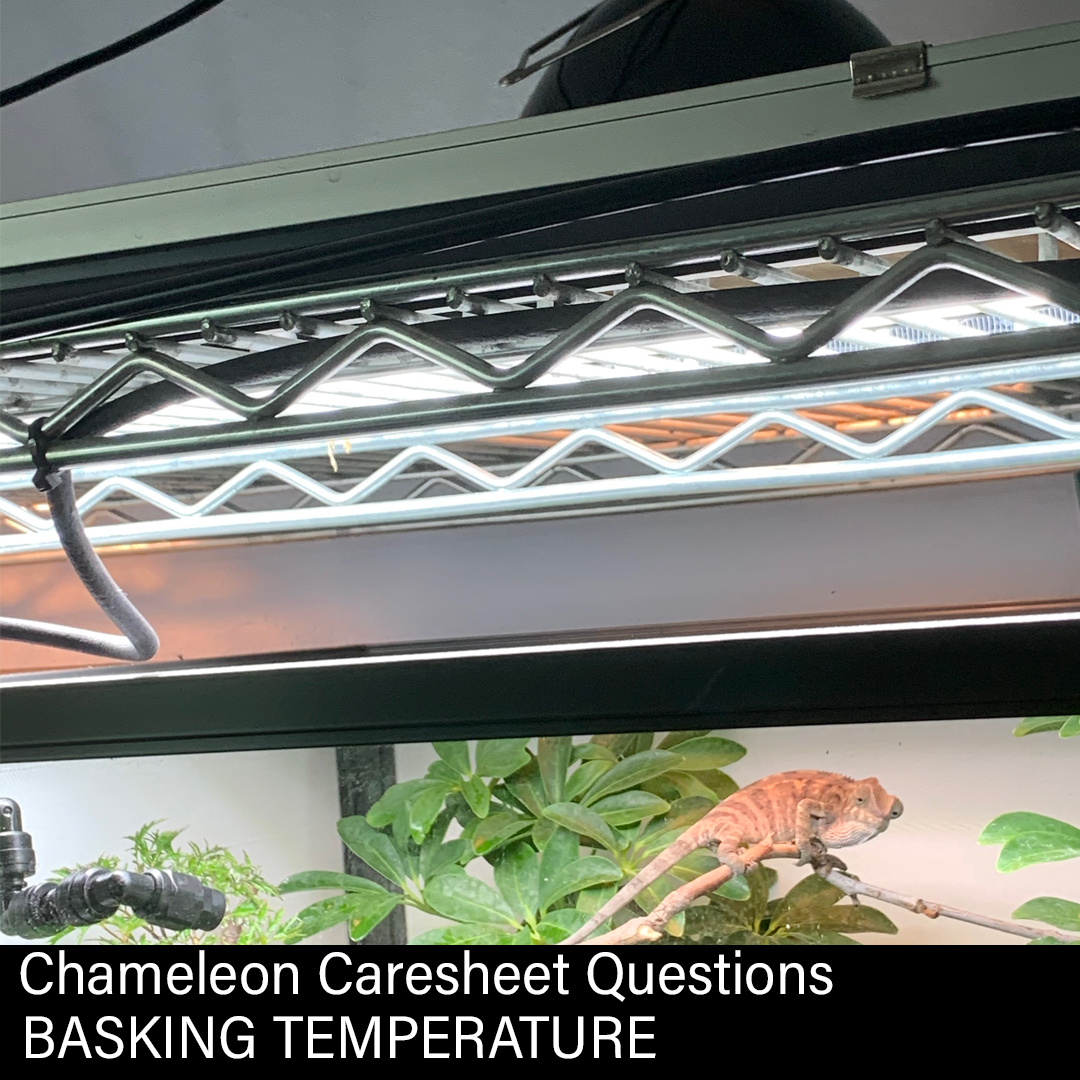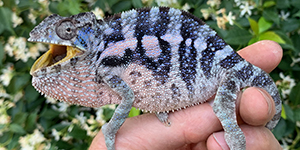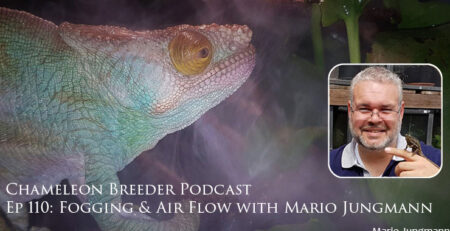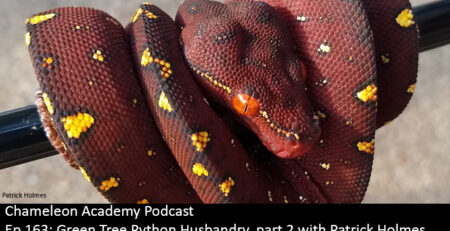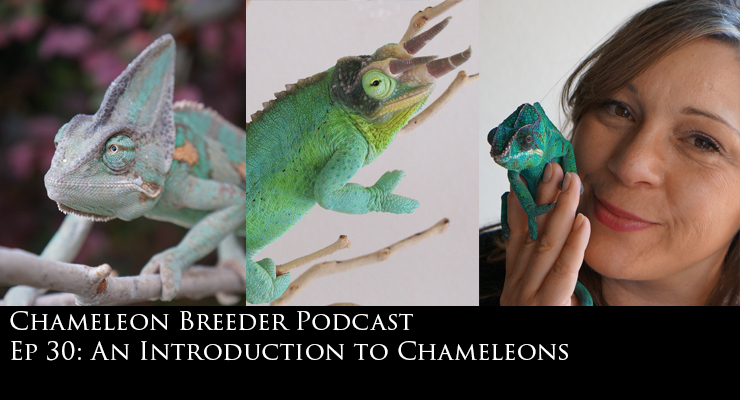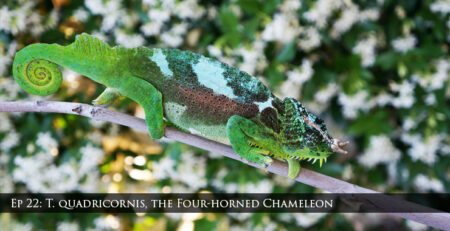Chameleon Environment: Basking Temperature
Basking temperature is a care sheet parameter that has been going through scrutiny lately. Thus there will be a wide range of values you will run into when scanning the available care sheets out there. Each species has its own range, but if we take panther chameleons as an example, I have seen values from 100F down to 80F. Most breeders have their suggested basking temperature ranges in the high 80s to low 90s. So, why the wide range?
Basking is important as chameleons are ectothermic, or cold blooded, and, after a cool night, need to raise their body temperature using external heat. They will bask until they achieve their target temperature and then go about their day. This target temperature is necessary for proper digestion and optimal body function. But, like every care parameter, there can be too much and too little.
Way Too Much: Chameleons can, and will, burn themselves if the basking temperature is too hot. Although they can thermoregulate and will bask until they are done, they seem to have no mechanism to detect that they are burning. Chameleons will sit under a basking light that is too hot and literally burn themselves. We do not know if this is because they cannot feel it, they do not know what the feeling is, or if the need to warm up overrides the signal that there is pain from burning. But one thing is clear, we chameleon keepers have a responsibility to carefully monitor the basking temperature allowed in the cage. See the medical section on Chameleon Burns for more information.
Too Much: This is the area that has only been recently brought to the spotlight (so to speak). Chameleons can be overcharged. Given heat and excessive food and the chameleon’s body will enter an unhealthful state where they grow overweight and females will overproduce eggs in both fertile and infertile clutches. This is unhealthy in males and life threatening in females through dystocia (egg binding).
Just Right: When the basking temperature is just right the chameleon will warm themself under the bulb for 30 to 60 minutes and then retreat away from the bulb heat to find food or rest safely in the leaves.
Too Little: When there is not enough heat the chameleon will be lethargic and internal processes will be slowed down. A growing chameleon that does not receive enough heat will grow slower and could be stunted if the low temperature condition persists over the months.
The complication is that the effect of the basking is in the dose, meaning (temperature x length of basking time) and there has been no firm test performed to determine the optimal basking “dose”. So the caresheet author’s job is to select a temperature that they judge effective by watching chameleon behavior and vigor when presented with certain temperature ranges.
The reason why there is a wide range in basking temperature advice is that we are becoming more aware of there being the “Too Much” range of temperature between the level where they will be burned and the healthy range of basking temperatures. This realization is relatively new because large and plump chameleons were typically viewed as desirable. Large clutches of eggs were taken as a badge of honor that our husbandry was excellent. Educating the community that this is this is the opposite of good husbandry has been a slow process.
The decrease in recommended basking temperatures is in response to the desire to extend the chameleon’s life – especially the females. Success is measured in the slim body build, lack of infertile clutches laid, and natural levels of eggs being produced.
The main species of concern is the Veiled Chameleon as they are especially prone to being overcharged and readily will present you with an oversized clutch of infertile eggs up to over 100 per clutch, but we see this in panther chameleons and others to a lesser extent.
For the Chameleon Academy care summaries I choose a basking temperature that is on the low end of what has a long track record of producing healthy chameleons. I do not go to the lowest levels as they have not been fully tested across the general community. The reason why this testing is important to me is that most of the community will not be able to identify the signs of chameleons not getting enough basking light. The exception species is the Veiled Chameleon as we are witnessing a health crisis to the point where laying bins are required in any female veiled’s cage and vets are offering proactive spaying procedures to save the female’s life before egg binding happens.
Conclusion
Basking temperature is a parameter which will evolve over time as more and more people show success with the lower ranges. This will rest on the shoulders of the experienced community that can identify the subtle signs of growing fat pads on one end or sluggish behavior on the other. After working this out within their own collections we will then see how other less experienced people interpret and execute the temperatures. And this stage is the final step to creating a “recipe” temperature range that is easy to follow.
Back to the Chameleon Question Hub!
Click here to go back to the Chameleon Question Hub to review more questions!

